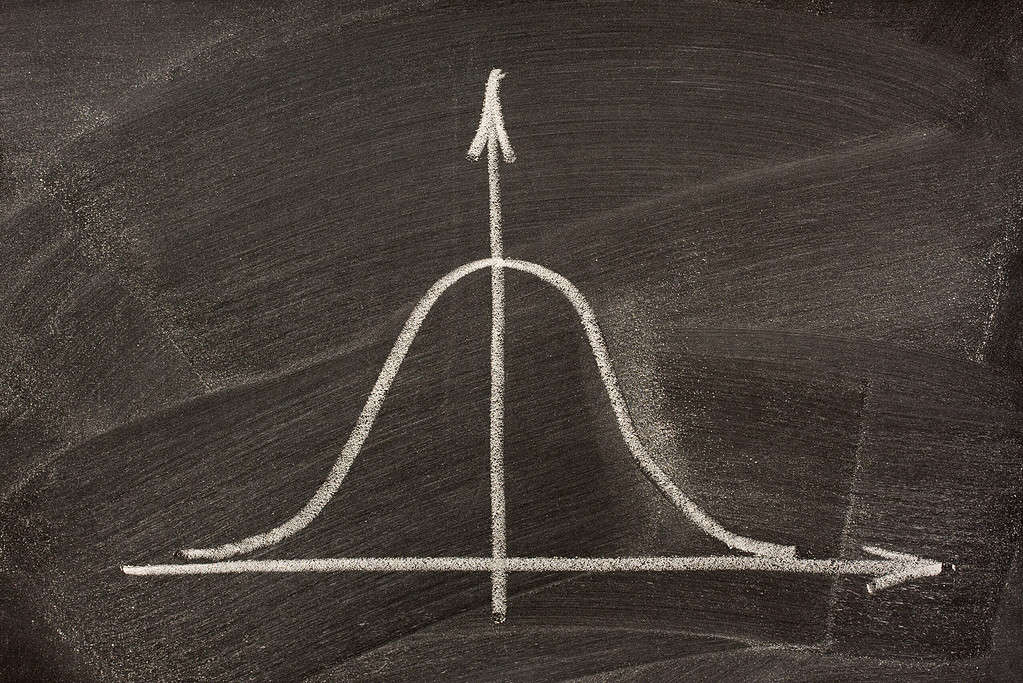
How do you measure process work? First introduced in the 19th and early 20th centuries, time and motion studies established rules of motion that guaranteed optimal performance during a given period and reduced the number of movements needed to accomplish work.
Over the years, time and motion studies have been conducted in many industries to ascertain how long it takes to do a given job and to improve it by setting production goals and reducing unnecessary steps.
Today, time and motion studies are entirely focused on the time aspect of work, or how long it takes to do a job, and are critical in getting fundamental information on how a process is working.
A time study can establish a baseline from which to drive improvement efforts or set a standard to control performance. Without basic time study measures, it is impossible to know whether work has improved or whether there are differences in performance in a unit.
Studying Process Work
When practitioners conduct a time study, they must know what they want to study. Process work is not strictly a set of disconnected tasks, it is a process. These processes have names, such as maintenance or transfers, and begin with inputs, move on to processes in which inputs are modified, and conclude with outputs.
While engaged in these input, process, output (IPO) chains, other things may intrude: mulling things over, asking a question, taking a phone call, going to lunch, and so on. In addition, people have different work styles – some are fast and diligent; others take their time. There are many opportunities for variation in conducting a task. The result: Time measurements are not precise, but estimates of how long a task takes. Over time, or by measuring the work of several people, it is possible to come to a general understanding of how long the work takes, which is good enough to get started.
Plan to Save Costs
Because time studies are costly in terms of both lost work time and the harnessing of employee trust and engagement, care must be taken in planning them. Follow eight simple steps in thinking through a time study for your process work to avoid potential potholes.
1. Know Why the Study Is Being Conducted

Articulate the reasons for doing a time study in writing before beginning. This is important for setting goals and for communicating to employees. Without a strong rationale for doing the time study, it will be hard to answer employee concerns. The following exchanges may help practitioners prepare for some basic questions:
Employee: Is there some concern that we are not doing our work?
Practitioner: No. A time study measures how long things take, not how fast you do them.
Employee: What if I have distractions during the day and I can’t work at my best level?
Practitioner: Our time study procedures allow you to take breaks, ask questions, attend meetings, and so forth. Remember, we are interested in how long transactions take, not how fast you are.
Employee: What are you going to do with the results?
Practitioner: We hope to use them, in part, to set standards to measure performance against. These standards are important because, without them, overall performance cannot be evaluated fairly.
2. Understand and Articulate the Different Types of Work to Measure
In planning the time study, think through the kinds of work the job entails. Ask associates: What kinds of things constitute 80 percent of work on a given day? This sort of question is vital to understanding the process work you’re measuring. Seek examples, write them down, and estimate the average time an employee spends processing each item. It is not definitive, but it will be interesting to compare estimates and assumptions about where the time goes to the actual measurement.
Consider whether to record everything that goes on during the day, including breaks, meetings, project work, and lunch, or just the work itself. Some work-related questions practitioners may want answered are:
- How often do employees ask supervisors or peers questions?
- How long is the wait time or hold time while data is pulled up or the computer is refreshed?
- What is the number of phone calls or inquiries from others?
Decide what information to gather related to the actual work, such as sources of work; numbers of defects in the incoming work; workflow during varying times of the day, week, or month; incomplete or inaccurate work; and so on. Fewer questions will lead to more stable and consistent feedback and greater participation.
3. Measure Work Elements Down to a Level of Desired Complexity
It is also important for the time study team to consider how detailed they want to get. Should they measure the time it takes to complete a spreadsheet of adjustments from a client, or should they break down each task on that spreadsheet by the type of transaction and measure every one? In making the choice, consider the “unit” of work – the lowest common denominator task that associates in the team undertake. For example, all maintenance transactions are individual units, the same with transfers and most transactions. They all take about the same amount of time and the unique factors are their frequency relative to each other.
If the team cannot determine the basic unit of work, they can review volumes for a few weeks and pick those areas that have the greatest and most consistent volume. Remember, the study is not intended to capture every employee interaction, just the top 70 percent to 90 percent, which will give a representative sample.
4. Ensure the Study Takes Place During a Representative Time

Most process work is subject to variations in volume, resulting from seasonal factors, and is predictable within limits. For example, consider tax preparers: They usually have an influx of work at the end of the year and again in March and April, and then work falls off over the summer.
Decide in advance when to conduct the time study. If it is during a light season, people may have more time on their hands and thus show results that emphasize non-work time. If it is a high season, associates will be under pressure to get the work done, perhaps put in overtime and avoid backlogs. In general, work standard times go up during times of low volume and down during times of high volume. It may be best to conduct studies during both periods and average the results.
5. Allow the Process to ‘Settle Down’ Before Recording Results
In time studies, practitioners may want to toss out the results from the first one or two days. Although this may seem wasteful, these early results often show missed on/off times, excessive times for tasks that represent a failure to close an activity, and long periods of no activity when the associate forgot to enter data. It is important to look at these results and let associates know what they are missing. In time they will become proficient and the process work will settle down.
6. Use Good Sampling Procedures for Reliable Results
There are two factors to consider when deciding how to handle the problem of a work sample: sample size and population characteristics.
The sample size is determined by a formula based on the power of the sample or its ability to represent the population with a predictable margin of error. To reduce the margin of error, it is necessary to increase the sample size. Margins of error of around 5 percent are common and only require a small sample proportionate to the size of the population.
A more important aspect of sampling deals with the characteristics of the population. The sample must reflect the population proportionately and without bias. This is sometimes called a “random, stratified sample.” Random means selecting measures that do not have any underlying bias, such as testing only the best or worst performers; stratified means sampling all conditions within the population, so that samples have been taken from all shifts for each day of the week. Sampling is both an art and a science. Practitioners must ensure that all conditions of work and associates are exposed to an equal chance of being represented during the study.
7. Understand the Basic Measures of Central Tendency

All the data collected in a time study can be displayed in the form of a distribution, often a histogram showing the frequency of various sets of scores and resembling a distribution curve of tall boxes.
A normal or bell-shaped distribution is common in processes free from bias. Over time, most distributions will look like the normal distribution, but when a short-term sample is taken, the distribution may be skewed to one end or the other. Such a distribution may prevent a team from settling on a fair time standard. To get a better understanding of “average” performance, unusually high or low numbers must be thrown out to make the distribution more normal.
Here is a good illustration of the problem of averages: Imagine collecting an estimate of the average income of a group of people in a homeless shelter. The average would probably be low. But what would happen to the average if Bill Gates for some reason appeared at the shelter? The average income would suddenly go into the hundreds of millions – truly a distorted picture. The best bet is to eliminate extreme highs and lows and go with the average of those times remaining.
Account for Extremes
But sometimes extreme scores are legitimate. Suppose there are two different groups on the same team. One group is seasoned and well-trained, while the other group is new to the process. Taking an average time standard might put the new people at a disadvantage. Especially since they cannot come up to the standard yet, and the seasoned people will already perform beyond it. A better measure is the median, or midpoint of a distribution, which divides the distribution in half. With extreme scores in the mix, the median provides a better view of performance.
The third measure of central tendency is the mode. The mode is simply the most frequently recurring value. If the same number appears again and again in a distribution, the distribution will be essentially flat. If 70 percent or 80 percent of the population falls on or close to the mode, it probably represents the right time standard. It would then be appropriate to throw out non-modal times.
One final note on distributions is about spread, or the shape of the distribution. If a distribution is long and spread out, it shows a lot of variability – many people recording many different times, both high and low, taken to complete a task. The more spread out a distribution is, the more difficult it will be to assign a time standard to the task. It may be that the team consists of a wide variety of skill levels and thus performance is varied. Several different types of transactions may be measured under one heading. Re-check what is being measured and the experience levels of the associates until the factors responsible for the variability are clear – reducing variability will improve the validity of the time standard.
8. Learn Some Common Terms
Before an organization can manage productivity based on standard times. It is critical to understand the interplay between demand, capacity, and utilization. You also need to know how to pull the various levers to ensure that demand is anticipated, capacity managed and utilization driven to the highest levels.
- Demand refers to inputs such as customer requirements and number of transactions. Without a time standard, it is difficult or impossible to quantify demand.
- Capacity refers to the amount of work a team can do in a given amount of time.
- Utilization is the efficiency with which capacity is applied based on demand. It is one measure of productivity. An organization is 100 percent utilized when everyone in the team is working to capacity. But, for example, if the team is capable of processing 1,000 transactions per week and is processing 600 transactions, utilization will be .60, or 60 percent.
- Demand management is the ability to use measures of capacity to adjust the workforce to changing demand. This can be done only with an understanding of the capacity of the team.
Assigning work based on transaction types rather than time standards can result in capacity imbalances. Using time standards allows an organization to balance its capacity. When capacity is balanced, utilization increases. Further, other value-added activities can be undertaken when everyone is working to capacity and doing their fair share.
Utilization represents a manager’s ability to maintain the balance between capacity and demand and to strike the optimal mix. Utilization will constantly shift based on changes in demand, capacity, and seasonal factors. Other constraints such as turnover, training time, vacation time, and so forth should be considered. Therefore, rebalancing regularly is important.
Other Useful Concepts and Tools
Now that you’re up to speed on process time and time studies, why not utilize your time to learn some other new concepts? Understanding how a value stream map and process map differ can yield great results, and these visualization tools are a handy way of getting a top-down view of a given workflow.
Further, you might need a refresher on Critical to Quality. Our guide comparing it to Critical to Customer is a vital read, especially if you’re looking for additional approaches in your business process management toolbox.
Wrapping It Up
Understanding process work is a vital way of seeing where your wastes and risks arise in a given process. However, it does have its distinct disadvantages. Learning where and when to harness a time study can see a transformation in your processes.